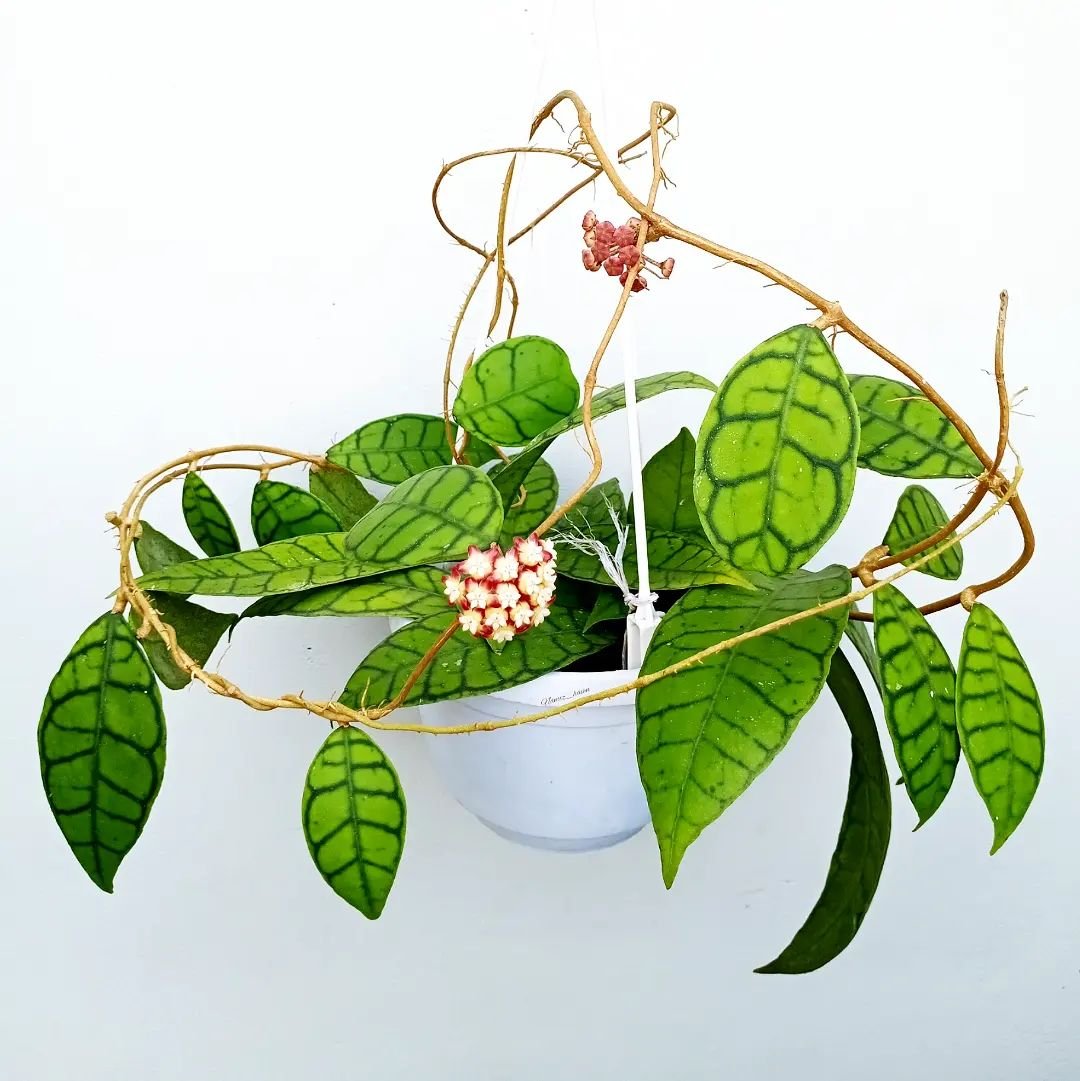Explore the beauty of Hoya Callistophylla! Learn expert tips on planting, care, and propagation of this stunning hoya variety, perfect for plant enthusiasts and beginners alike.
Hoya Callistophylla is an exotic and stunning houseplant known for its unique foliage and beautiful blooms. In this guide, I’ll share my expertise on how to grow, care for, and propagate this captivating plant, ensuring it thrives in your indoor garden.
As a seasoned plant enthusiast with years of experience in caring for houseplants, I can confidently say that Hoya Callistophylla is one of the most beautiful and rewarding varieties to grow. Its thick, waxy leaves and charming clusters of star-shaped flowers make it a standout in any plant collection.
Here’s an easy-to-read chart for Hoya callistophylla:
| Category | Information |
|---|---|
| Botanical Name | Hoya callistophylla |
| Common Name | Hoya callistophylla |
| Plant Type | Perennial, Epiphytic Vine, Houseplant |
| Hardiness Zone | USDA Zones 10–12 (indoor plant in cooler zones) |
| Sun Exposure | Bright, indirect light |
| Soil Type | Well-draining, orchid mix or light, airy potting soil |
| Watering | Moderate; allow the top inch of soil to dry between waterings |
| Growth Habit | Vining, trailing |
| Height/Spread | Can vine up to 6–10 ft |
| Special Features | Unique dark green veined leaves, clusters of fragrant, star-shaped flowers, low-maintenance, easy to propagate |
Why Choose Hoya Callistophylla?

- Unique Foliage: The leaves are thick and leathery, with a beautiful marbled pattern that adds texture and interest.
- Fragrant Flowers: When in bloom, Hoya Callistophylla produces sweet-scented flowers that can fill your space with a delightful fragrance.
- Low Maintenance: This plant is relatively easy to care for, making it suitable for both beginners and experienced gardeners.
Understanding Hoya Callistophylla
Botanical Information
- Scientific Name: Hoya Callistophylla
- Family: Apocynaceae
- Native Habitat: Native to Malaysia and Indonesia, where it grows in humid, tropical environments.
Hoya Callistophylla is characterized by its thick, dark green leaves and clusters of small, star-shaped flowers, which typically bloom in late spring to early summer.
Growing Hoya Callistophylla
Choosing the Right Location
- Light Requirements: Hoya Callistophylla thrives in bright, indirect light. Too much direct sunlight can scorch the leaves, while too little light can hinder flowering.
- Temperature: This plant prefers temperatures between 65°F to 85°F (18°C to 29°C). Keep it away from cold drafts or sudden temperature changes.
Soil Requirements
- Soil Type: Use a well-draining potting mix, preferably one formulated for succulents or aroids. You can also create your own mix using potting soil, perlite, and orchid bark.
Potting
- Container: Choose a pot with drainage holes to prevent waterlogging.
- Repotting: Hoya Callistophylla benefits from being repotted every 2 to 3 years or when it outgrows its container.
For more detailed potting information, you can check out the American Horticultural Society.
Caring for Hoya Callistophylla
Watering
- Watering Schedule: Water thoroughly but infrequently. Allow the top inch of soil to dry out between waterings. Overwatering can lead to root rot, which is the most common issue for Hoya plants.
- Humidity: Hoya Callistophylla enjoys higher humidity levels. You can increase humidity by misting the plant or placing it on a pebble tray filled with water.
Fertilizing
- Fertilizer Type: Use a balanced, diluted liquid fertilizer every 4 to 6 weeks during the growing season (spring and summer). Reduce feeding in fall and winter when the plant is dormant.
Pruning and Training
- Pruning: Prune to remove dead or yellowing leaves and to encourage bushier growth. You can also trim back long vines to maintain the desired shape.
- Training: Use a trellis or support for the plant to climb, as it naturally grows in a vining manner.
Propagation of Hoya Callistophylla
Methods of Propagation
- Stem Cuttings:
- Take a cutting with at least two leaves and a node.
- Allow the cutting to callous for a few hours before placing it in soil or water to root.
- Leaf Cuttings:
- Although less common, you can propagate using leaf cuttings. Ensure the leaf has a node for successful rooting.
Rooting Conditions
- Soil Method: Keep the soil moist but not soggy. Cover the pot with a plastic bag to maintain humidity.
- Water Method: Place the cutting in water, ensuring the node is submerged but leaves are above water. Change the water weekly.
For more information on propagation techniques, visit the University of Florida’s Gardening Solutions.
Common Issues and Solutions
- Pests: Watch for common pests like mealybugs and spider mites. Treat infestations with insecticidal soap or neem oil.
- Leaf Drop: If your plant drops leaves, it may be due to overwatering, underwatering, or sudden temperature changes.
Hoya Callistophylla is a stunning addition to any plant collection, offering unique foliage and fragrant blooms. With proper care and attention, you can enjoy this exotic beauty for years to come. Follow the expert tips outlined in this guide, and you’ll have a thriving Hoya Callistophylla that will be the envy of your plant-loving friends!
For more information on hoya care and cultivation, visit the Hoya Society International.